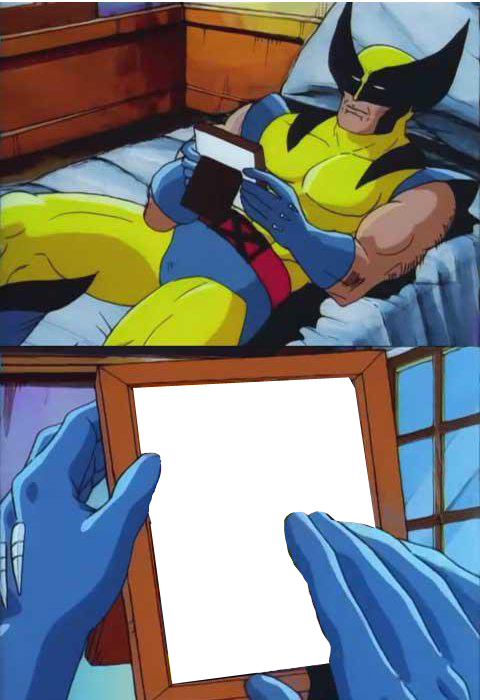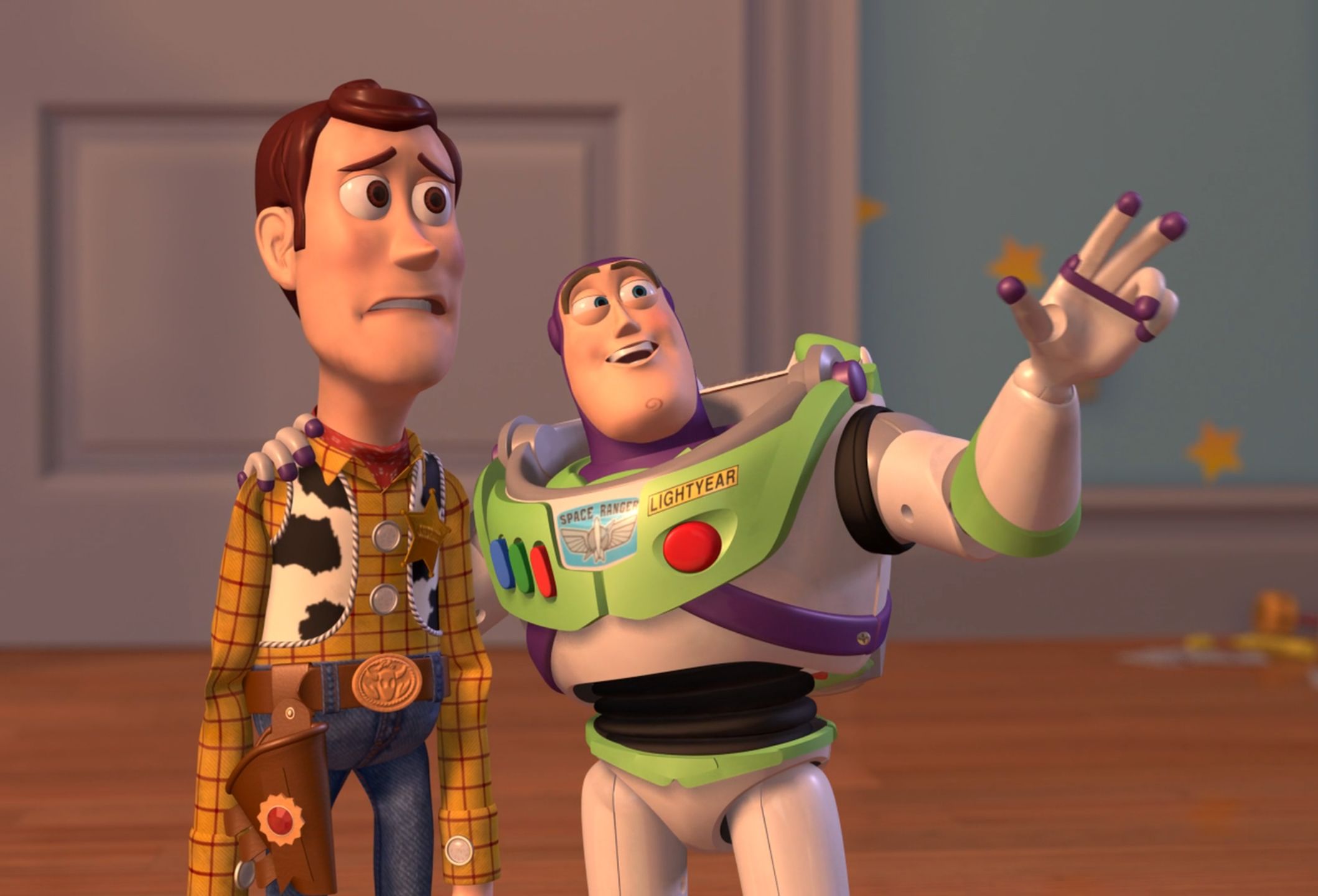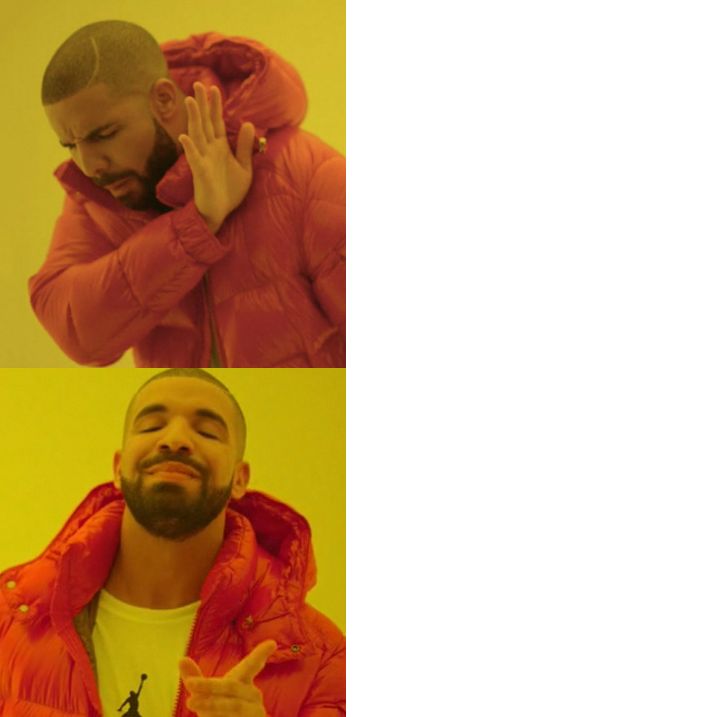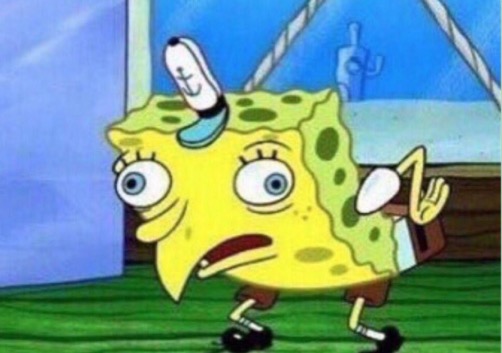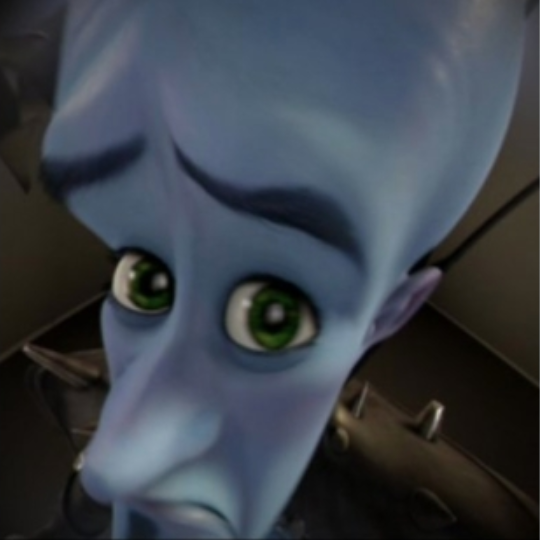10 Most Popular Meme Templates of 2025
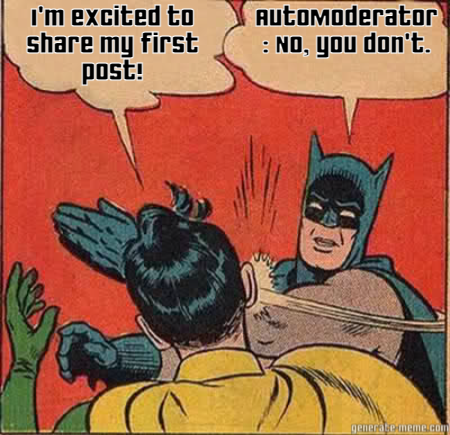
Memes in 2025 are more than just jokes - they're a $6.1 billion industry shaping how we communicate and market online. The top meme trends this year are driven by AI-generated content, short-form videos, and social media algorithms. Here's a quick summary of the most popular meme templates:
-
AI Error Memes: Humor from AI fails like awkward text responses or bizarre image generations.
-
VR Fail Moments: Funny mishaps in virtual reality experiences.
-
Weather vs. Reality Memes: Comparing weather forecasts to real-life reactions.
-
Crypto Price Swings: Jokes about cryptocurrency's volatile ups and downs.
-
Space Tourist Photos: "Expectation vs. Reality" memes about space travel.
-
Hologram Meeting Blunders: Glitches in holographic remote work setups.
-
AR Filter Mistakes: Funny fails from augmented reality filters.
-
Quantum Computing Jokes: Simplifying complex tech with humor.
-
Gene Editing Results: Playful takes on genetic modification experiments.
-
AI Art Reactions: Laughs from AI's attempts at creating art.
Memes are now essential for brands, with campaigns featuring memes delivering 14% higher click-through rates and 60% more organic engagement. Whether you're laughing at AI blunders or sharing crypto jokes, memes in 2025 are a mix of humor, technology, and cultural commentary.
1. AI Error Memes
AI error memes have taken over social media in 2025, poking fun at tech slip-ups in a way that's hard to ignore. A prime example? Over 310,000 people participated in the 'ChatGPT Roast Challenge' on Instagram in August 2024 [3].
The charm of these memes lies in how they turn complex technology into something everyone can laugh at. As user Roy put it:
"I once asked a chatbot to write me a grocery list and it suggested I 'purchase three partial illusions of broccoli.' That day, I realized that maybe the AI revolution isn't quite at our doorstep." [2]
These memes generally fall into three categories:
| Error Type | Description | Popular Example |
|---|---|---|
| Text Blunders | Odd responses or misread commands | ChatGPT's sassy comebacks |
| Image Generation Fails | Weird or nonsensical AI-created images | Extra limbs, impossible physics |
| Task Mishaps | Everyday tasks hilariously botched | Virtual assistants' odd advice |
This categorization highlights both the humor and the marketing possibilities of AI's missteps. In fact, brands using AI error memes report a 19% click-through rate, significantly higher than the 6% seen with traditional campaigns [5].
Some of the most talked-about AI fails of 2025 include Amazon's recruitment tool discriminating against resumes with the word "women's" [4], and Zillow's AI algorithm causing financial losses in their house-flipping business [4]. These real-world failures have inspired countless memes, showcasing both the comedic and serious sides of AI's shortcomings.
For marketers and creators, these memes offer a unique way to connect with audiences. Genuine AI blunders resonate more, especially with millennials who view 20-30 memes daily [5]. It's a chance to embrace humor while acknowledging the current limits of AI.
A viral post from Data Science Dojo summed it up perfectly:
"Racing to be the first to create Artificial Intelligence without foresight into its implications seems moronic and extremely dangerous." [4]
As users continue to test AI systems with creative prompts, this blend of humor and tech critique remains at the heart of 2025's meme culture [3].
2. VR Fail Moments
VR fail moments have become one of the standout meme formats of 2025, highlighting the funny side of virtual reality blunders. These memes tap into the shared experiences of VR users, making them both relatable and entertaining.
For instance, 78% of marketers have reported increased engagement when incorporating meme content into their campaigns [6].
The numbers speak for themselves when it comes to humor in marketing:
| Metric | Increase |
|---|---|
| Expressiveness | +27 points |
| Engagement | +14 points |
| Distinctiveness | +11 points |
This data explains why so many brands are weaving humor into their strategies. Kristin Marquet, CEO of Marquet Media, puts it perfectly:
"Successful brands remix viral formats with industry-specific humor turning them into something that feels timely and deeply relevant to their audience. This ensures memes are entertaining and aligned with brand positioning and messaging." [7]
It's no surprise that 94% of marketing professionals now use memes as part of their campaigns [6].
April Ray, Chief Problem Solver at Intentional Marketing, adds:
"B2B marketing can sometimes feel overly polished or heavy on corporate jargon, and memes cut through that by using humor and cultural references that resonate with your audience." [7]
The challenge for creators and marketers is to stay quick on their feet and genuine. The sweet spot lies in combining humor with relatability while staying consistent with the brand's tone.
To successfully incorporate VR fail memes, keep a close eye on trends and audience reactions [6][7].
3. Weather vs. Reality Memes
Weather vs. Reality memes have gained traction in 2025, highlighting the often-funny mismatch between weather forecasts and real-life reactions. A standout example is the 'Lawnmower Man' meme, which features a Canadian resident in Three Hills casually mowing his lawn while a tornado looms in the background. His laid-back comment, "keeping an eye on it", perfectly captures the humor in ignoring forecast warnings [12].
This type of weather-based content resonates deeply with audiences, as studies reveal that 72% of people prefer ads incorporating weather elements [13]. The popularity of this trend is backed by data:
| Engagement Metric | Performance |
|---|---|
| Consumer Engagement | 50% higher likelihood |
| Purchase Intent | 94% increased probability |
| Brand Interaction | 72% positive response |
Brands are tapping into this meme trend to drive results. For instance, Molson Coors' weather-triggered campaign saw 89% more link clicks, a 50% rise in brand mentions, and 33% more comments than their standard ads [14]. Komal Dixit from Social Media Growth emphasizes the potential here:
"Memes aren't just jokes - they're opportunities. Will your brand seize them?" [10]
Memes also have a strong sharing culture, with 74% of millennials sharing memes to brighten someone's day [9]. Stella Artois Cidre leveraged weather-responsive marketing to achieve a 65.6% year-over-year sales increase [14]. Additionally, 55% of 13-35-year-olds share memes weekly, making this format a key tool for engaging younger audiences [8].
4. Crypto Price Swings
Cryptocurrency price swing memes have become a major trend, with 40% of crypto investors saying memes were their introduction to digital asset investing [15].
One popular example is the "BUY THE DIP" meme, which pokes fun at price drops. These memes achieve 10x more reach and 60% higher organic engagement compared to standard marketing materials [1].
This phenomenon aligns with changing user habits:
| Behavior | Percentage |
|---|---|
| Weekly Meme Sharing (Ages 13–35) | 55% |
| Preference for Social Media as News Source | 89% |
| Influence of Memes on Purchase Decisions | 57% |
| Memes Helping Explain Concepts | 65% |
Meme creators have tapped into this shift, crafting templates that simplify crypto trading. For instance, the "Crypto Noob vs. Crypto OG" meme contrasts the reactions of beginners and seasoned traders during market swings. Its success lies in breaking down complex ideas into digestible humor. Ying-Ying Hsieh, an assistant professor and associate director at the Center for Cryptocurrency Research and Engineering at Imperial College London, notes:
"To this day, people still buy meme coins for the same reason as why people gamble. The thought of winning big and never having to work another day in your life, in addition to its proven outcome, provides a constant vortex of attraction." [16]
Other meme formats, such as "Bitcoin Is Dead", highlight perseverance, while "When Lambo" captures the aspirational side of crypto culture. Even the Securities and Exchange Commission has acknowledged their role:
"Meme coins typically are purchased for entertainment, social interaction, and cultural purposes, and their value is driven primarily by market demand and speculation. In this regard, meme coins are akin to collectibles." [16]
Templates like "Taking Profits" and "Buy the Dip, but the Price Is Always Dipping" resonate deeply with younger audiences. In fact, 63% of American internet users aged 18–29 actively share crypto memes online [1].
5. Space Tourist Photos
Memes about space tourism have gained a lot of attention lately. They play on the stark contrast between polished marketing campaigns and the actual experiences of space tourists. In June 2023, Virgin Galactic sold 800 tickets for space travel, priced as high as $450,000 each [18].
These memes, much like other trends for 2025, highlight the gap between futuristic expectations and everyday realities. One of the most shared formats is the "Expectation vs. Reality" meme, which humorously compares Virgin Galactic's sleek promotional images to real-life photos showing cramped cabins and less-than-perfect views of Earth [17].
| Meme Format | Description | Usage |
|---|---|---|
| "Worth Every Penny" | $250,000 ticket price vs. 4 minutes of weightlessness | Questions the value of the experience |
| "Space Selfie Fails" | Blurry photos of Earth from space | Highlights challenges in photography |
| "Tourist vs. Astronaut" | Amateur vs. professional space photos | Focuses on the gap in photo quality |
This type of humor, built on the contrast between promises and reality, opens up a broader conversation about how memes shape modern digital storytelling.
"Now World View is a lot more than luxury space travel... It's about giving people that incredible perspective of seeing the Earth that we live on as a globe in the blackness of space." [17]
"At 100 miles up, you are just skimming the surface and you don't get a feeling for the Earth as a whole." [17]
"For most of the people who have thus far flown as private space travelers, the bragging rights was a far second for them. In the future, I think you're right, the (bragging rights) is going to be a major part of the whole thing ... It deals with pride and prestige and ego." [17]
These memes especially resonate with younger audiences, showing a 30% engagement rate on social media - far higher than traditional ads, which average just a 1% click-through rate [19]. With millennials viewing 20–30 memes per day on average [19], space tourist memes have become a powerful mix of humor, entertainment, and social commentary.
sbb-itb-5da5b89
6. Hologram Meeting Blunders
Holographic meetings have become a staple for remote work, but the technical hiccups they bring have turned into viral sensations. Since the introduction of platforms like Microsoft Mesh, Google's Project Starline, and Cisco's Webex Hologram, users have been flooding social media with stories of their most unforgettable holographic mishaps [22].
One of the most popular formats is the 'Hologram Handshake Gone Wrong,' where glitches disrupt executives' handshakes. These moments can be costly - up to $2,500 per session [20] - but they’ve become a treasure trove for meme creators.
| Meme Type | Description | Common Glitch |
|---|---|---|
| Ghost Mode | Partially rendered holograms | Transparent or fading body parts |
| Time Lag Theater | Delayed responses | Frozen expressions mid-sentence |
| Spatial Chaos | Positioning errors | Holograms appearing in wrong spots |
These technical bloopers strike a chord because almost everyone has experienced some form of virtual meeting frustration. As Wayne Kurtzman, IDC research vice president, explains:
"Within years, not decades, the videoconferencing we used during the pandemic will look so old to us. Online meetings will feel more personal - in some cases, amazingly more realistic." [22]
Andrew Nartker, Google’s director of product management, adds:
"The technology works like a magic window, where users can talk, gesture and make eye contact with another person, life-size and in three dimensions." [22]
Templates like 'Bandwidth Breakdown' (where holograms degrade in quality) and 'Mixed Reality Mishap' (avatars awkwardly clipping through objects) have also captured these glitches perfectly.
Many businesses have embraced the humor, sharing their hologram bloopers on social media [23]. Employees are now documenting their funniest holographic meeting fails, creating a new wave of user-generated content.
This trend reflects a broader cultural shift in 2025, where digital blunders are celebrated with humor. Companies are leaning into the imperfections, often kicking off meetings with a laugh over technical issues instead of aiming for perfection. It’s a reminder of how deeply technology has integrated into our daily work lives [21].
7. AR Filter Mistakes
In 2025, AR filter blunders became meme gold, especially after Meta's decision in January to remove third-party AR filters [24][25].
The popularity of AR effects is undeniable, with over 600 million users engaging with Facebook and Instagram's AR features and 200 million daily Snapchat Lens users [26]. These numbers showcase how AR technology can both inspire creativity and lead to unexpected results.
Industry leaders have weighed in on this shift:
"The mistake brands make when they move into the AR space is only thinking about what they're trying to sell or trying push upon the customer." [27]
Snapchat's AR products are particularly popular, with over 90% of young users in the US, France, and the UK using them regularly [26]. Jeremiah Johnson, Creative Technology Lead at Barbarian, points out:
"We're getting pretty close to the end or past the end of where having AR integration as a novelty or gimmick is enough." [27]
This perspective aligns with the evolving purpose behind AR tools, pushing beyond simple gimmicks toward meaningful engagement. As AR continues to grow in 2025, it brings both creative opportunities and marketing challenges.
8. Quantum Computing Jokes
Quantum computing memes saw a surge in popularity in 2025, poking fun at common misunderstandings about the technology. These jokes struck a chord with tech professionals who appreciate humor rooted in complex scientific topics. It’s part of a larger trend in 2025 where humor often stems from misinterpretations of advanced technologies.
McKinsey’s forecast of a $64 billion quantum computing market by 2030 has fueled a wave of memes. Many of these highlight the gap between lofty predictions and the current challenges facing the field [29].
One researcher summed up this skepticism perfectly:
"I'm worried currently that the biggest risk to eventually building large quantum computers are not the great technical and scientific challenges ahead, but the potential loss of credibility our field is facing because we are being so reckless." [29]
Another meme format gained traction after Scott Aaronson, a quantum computing expert, addressed oversimplified explanations. He pointed out, "The notion that qubits can simultaneously be 0s and 1s and that these simultaneous states can be measured amounts to a 'fundamental misstep of quantum computing popularization.'" [30]
These jokes also became more widespread after reports suggested quantum computers could tackle tasks in minutes that would take supercomputers years [29]. Interestingly, they’ve also served an educational purpose, helping to debunk myths as companies demonstrate practical uses for the technology [31].
Richard Feynman’s famous quote - "If you think you understand quantum mechanics, you don't understand it" - has become a recurring theme in these jokes. It resonates with both experts and casual observers, adding a layer of humor that bridges the gap between the scientific community and the public [28].
9. Gene Editing Results
Gene editing memes have taken off, highlighting both the marvels and the ethical dilemmas of biotechnology.
In early 2025, these memes gained popularity, often poking fun at CRISPR experiments and decentralized science (DeSci) projects. They capture the public's mix of curiosity and unease about genetic modification. A standout example is HairDAO’s launch of its Follicool Shampoo, priced at $49.95 and bundled with 1 million POO tokens [32]. This quirky mix of biotech innovation and cryptocurrency rewards sparked a flood of memes about the intersection of Web3 and genetic science.
The meme trend really picked up after a survey revealed that 30% of respondents would consider editing embryos to boost their children's chances of getting into elite colleges [34]. This statistic gave rise to "designer baby" memes, questioning societal values around genetic engineering.
Kári Stefánsson, CEO of deCode genetics, added fuel to the meme fire with his thought-provoking comment:
"This is beginning to be about the essence of who we are as a species" [34]
This reflection on identity and genetic alteration has inspired a wave of humor around the cultural and scientific implications of gene editing.
Another popular theme in these memes is the concept of carcinization - the independent evolution of crab-like traits across unrelated species. It’s a quirky nod to the unpredictability of evolution, which parallels the unexpected outcomes of gene editing [33].
Public opinion on genetic modification remains split. While 30% of Americans support gene editing to reduce disease risks, 84% express concerns about its potential misuse [35]. This mix of optimism and fear is a recurring theme in gene editing memes.
Fyodor Urnov, a gene editing expert from UC Berkeley, summed up this ambivalence:
"I would say my enthusiasm for what the human genome is going to be in 100 years is tempered by our history of a lack of moderation and wisdom. You don't need to be Aldous Huxley to start writing dystopias." [34]
A common meme format involves exaggerated before-and-after images of gene editing results, often paired with this striking quote:
"Why wait 100,000 years for natural selection to do its job? For a few hundred dollars in chemicals, you could try to install these changes in an embryo in 10 minutes" [34]
This playful contrast between the slow pace of evolution and the rapid possibilities of gene editing has become a defining feature of the 2025 meme landscape, reflecting society's evolving relationship with this powerful technology.
10. AI Art Reactions
AI art reactions have brought a fresh twist to the ever-evolving meme world, combining humor with pointed cultural commentary. These memes often showcase unexpected and sometimes hilarious AI interpretations of art, sparking conversations about creativity and technology.
Trends like the viral 'AI Time-Travel' and '#MyAIAlterEgo' have taken this concept further, with millions of users sharing AI-generated historical reenactments and futuristic self-portraits. These trends highlight how people are experimenting with AI to create content that’s both entertaining and thought-provoking [37].
Interestingly, a recent survey found that people are much more skeptical about AI's role in the arts compared to its use in fields like medicine or real estate [38]. This skepticism has fueled memes poking fun at AI’s attempts to imitate human creativity.
Technology analyst Benedict Evans captured this sentiment well, saying:
"A difference in scale can be a difference in principle" [39].
Despite the mixed feelings, campaigns featuring AI art reaction memes have seen impressive engagement, with a 19% click-through rate [5]. This shows that these memes aren’t just funny - they’re also effective for brand interaction.
On Instagram alone, over 1 million memes are shared daily, and many highlight the often comical gap between AI’s mechanical outputs and the subtleties of human creativity [5][36].
AI art reaction memes do more than entertain - they reflect ongoing cultural debates about the role of technology in creativity. Some experts even compare the rise of AI art to pivotal moments in art history. By blending humor with critique, these memes are pushing the boundaries of how we think about creativity today.
Conclusion
The meme world of 2025 blends technology, culture, and humor in ways that go far beyond simple entertainment. Memes have become a key part of online communication, evolving into tools that shape conversations and connect people.
AI-driven platforms, like Generate-meme.com, have made it easier than ever to create memes, allowing both brands and individuals to tap into meme culture. This shift has led to much higher engagement across platforms, as discussed earlier.
Here are three major trends shaping memes today:
-
Technology's Role
Memes about AI, VR, and AR highlight how technology is a big part of daily life. These memes do more than amuse - they help us make sense of fast-paced tech changes through humor. -
Cultural Relevance
Templates covering topics like cryptocurrency and space tourism reflect society's current obsessions. They show how humor can quickly capture cultural moments and spark conversations. -
Marketing Potential
With millennials viewing 20–30 memes every day [19], brands have realized memes are a powerful way to grab attention. For instance, 39% of people say memes play a big role in catching their eye [40]. A great example? Tim Hortons offering free coffee to "Kens" as part of its Barbie movie campaign.
Looking ahead, meme culture is set to become even more interactive and tailored, thanks to AI tools that adapt to trends in real time [11]. Whether you're managing a brand, creating content, or just enjoying memes, staying updated and keeping your voice genuine is key to connecting with audiences.
At its core, memes bring people together. In fact, 74% of millennials share memes just to make others smile [9]. In a digital-first world, this simple act of connection is what makes memes so important.

